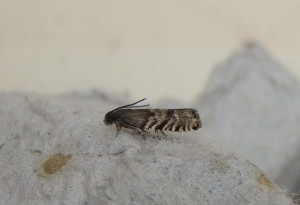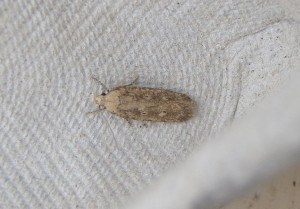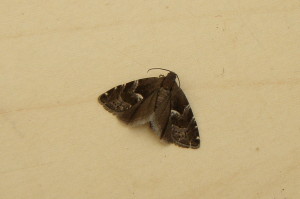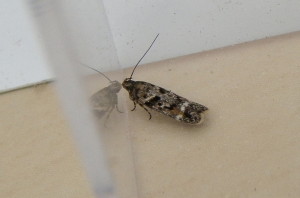Like several other people the highlight of the spring here was the 9th of may which produced a cydia strobilella and a platyedra subcinerea , the only other species of note was a cydia coniferana on the 9th of june. The couple of warm and still nights last week produced a bit of a micro bonanza , with moth of the night on the 7th being Ectoedemia decentella (as in woolpit!) ,mine was like a rabid panda and it took 20 mins and 2 escapes to get a rubbish photo . The star of the night on the 8th was probably a rather smart Gelechiid that looks like Caryocolum junctella?. Any expert opinion/re I.D.s welcome Allan



Links
Archives
Categories
Search

Caryocolum are not easy to ID. Yours looks like one Paul Kitchener recently caught which was C. alsinella. That is small. Wingspan 8 to 9 mm. If you want an ID it needs a dissection to be sure. I am willing but you may wish to send it elsewhere. The commonest Caryocolum around Suffolk coastally is C. marmorea. I have had a few of them recently.
I have just made a closer comparison of your photo with that of Paul’s Caryocolum. They are near identical. If the wingspan is small enough then it is C. alsinella. If larger than 9 -10 mm span it is not.
Hi Raymond, the moth in question has a total length of 5.5 which makes the w.s. about 10.5?.This seems pretty inconclusive as the alsinella on lepiforum is also 10.5,so if you could do a dissection that would be great (should i send it to you?). I to had the night of the beetles plus 20+ click beetles,3sp ofcockchafer and 30+ water bugs (notonectidae?).blackneck on 16th,evergestis limbata and first coast dart of the year on 18th. many thanks allan
Yes I am happy to do a dissection. I do feel it is quite likely alsinella though. That is quite large for it. Steve Palmer’s Gelechiid web site states it is similar in appearence to C. viscariella. I have this in my garden. Another turned up 2 days ago but they do not match up to the viscariella images on that web site. The genitalia are esceedingly similar but there is a difference that Lepiforum helps to show as well as shown in MOGBI. I do not wish to post my address or email on this blog. Neil, Tony, Keith K have my email address if you contact one of them. Tons of limbata here this year up to ten per catch in my rear garden. Very encouraging for the species’ status in the UK.
I agree with Raymond, looks good for alsinella on external appearance in the photo. Size will make a difference though.